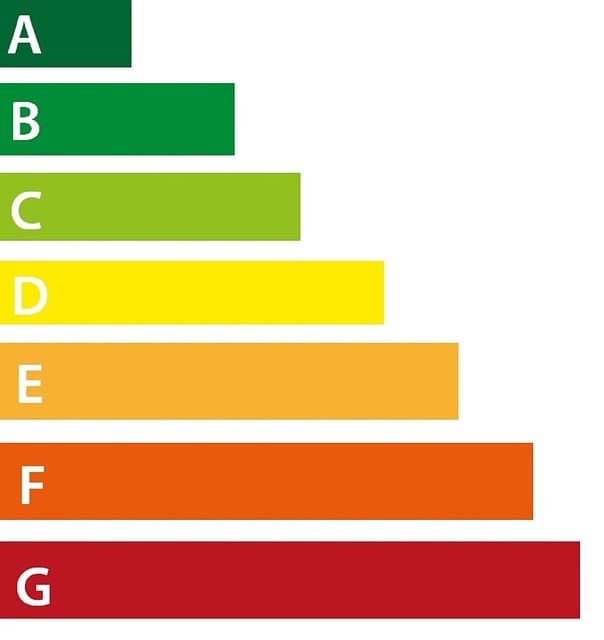Understanding Carbon Footprint

What is a Carbon Footprint?
A carbon footprint represents the total volume of greenhouse gases (GHG) produced by human activities. These emissions stem from various everyday activities, such as transportation, manufacturing, food production, and energy consumption. Today, it’s crucial for businesses to understand how to reduce carbon footprint in business and explore ways to achieve carbon-neutrality.
Transportation contributes to a significant portion of an individual’s carbon footprint due to the burning of fossil fuels in cars, trucks, planes, and ships. Manufacturing processes release large amounts of CO2 and other gases through the use of energy and raw materials. Businesses can use carbon apps to track and manage these emissions efficiently.
Food production, particularly livestock farming, emits methane and nitrous oxide, while energy consumption in homes and businesses results in CO2 emissions from burning fossil fuels for electricity and heating. In some cases, entire countries aim to become a carbon negative country, setting ambitious goals for carbon reduction.
Understanding your carbon footprint is crucial for identifying areas where you can reduce emissions and mitigate your impact on the environment. Tools like a carbon offset calculator and carbon footprint measurement can help individuals and businesses measure and reduce their emissions. Additionally, obtaining a carbon certificate can verify your efforts and commitment to sustainability.
By calculating and monitoring your carbon footprint, you can make more informed decisions about your lifestyle and consumption patterns. For instance, opting for public transport, reducing meat consumption, and choosing energy-efficient appliances are practical steps to lower your personal carbon footprint further. Furthermore, businesses can implement sustainable practices, such as forming a carbon neutral team, and investing in green technologies to reduce their overall emissions.
By addressing the sources and impacts of your carbon footprint, you contribute to the global effort to combat climate change. This proactive approach not only helps the environment but can also lead to cost savings and improved quality of life. For businesses, working with carbon consulting services can provide expert guidance on reducing emissions and developing a carbon reduction plan UK.
As individuals and organizations become more aware of their carbon footprints, collective actions can drive significant positive change, fostering a more sustainable and resilient world for future generations.
Measuring Carbon Dioxide Emissions
There are various methods to measure CO2 emissions, each providing insights into different aspects of carbon output. Territorial emissions account for all emissions within a specific geographic area, offering a localized view of carbon output. For businesses, conducting a carbon audit is a vital step in understanding their emissions profile.
This method is often used by governments and municipalities to develop regional policies and track progress towards emission reduction targets. For instance, cities might measure territorial emissions to understand the impact of local industries and transportation systems on air quality and climate change.
Consumption-based emissions, on the other hand, consider the carbon footprint of goods and services consumed, regardless of where they were produced. This approach highlights the global nature of human activity and carbon emissions by accounting for the entire supply chain, from raw material extraction to product disposal. For example, a smartphone purchased in one country might have a substantial carbon footprint due to manufacturing processes in another country and transportation emissions.
Understanding these measurements helps in assessing the total environmental impact and devising strategies for reduction. Tools like carbonfund and an carbon offset calculator can assist individuals and businesses in tracking their carbon emissions accurately. These calculators typically ask for data on energy use, transportation habits, waste generation, and purchasing patterns to provide a comprehensive carbon footprint assessment. By using these tools, individuals can identify high-impact areas and make targeted changes to reduce their emissions.
For businesses, measuring CO2 emissions is critical for sustainability reporting and compliance with environmental regulations. Detailed emissions data enable companies to set realistic reduction targets, invest in energy-efficient technologies, and enhance their corporate social responsibility profiles. Additionally, accurate measurement of emissions helps businesses identify cost-saving opportunities through reduced energy consumption and waste. Implementing strategies like carbon neutral delivery can further showcase a company’s commitment to sustainability.
Global Averages of Carbon Emissions

Carbon emissions vary significantly across different countries and regions, reflecting disparities in industrial activity, energy consumption, and lifestyle habits. Developed countries tend to have higher per capita emissions compared to developing nations due to more intensive industrial activity and greater energy use. For instance, the average American emits around 16 metric tonnes of CO2 annually, driven by high levels of car usage, energy consumption, and industrial processes. In contrast, the global average is closer to 4 metric tonnes, with many developing countries emitting significantly less due to lower industrial activity and energy consumption.
Recognizing these disparities in global warming highlights the importance of tailored strategies for reducing emissions based on regional and national contexts. In high-emission countries, strategies might focus on transitioning to renewable energy sources, improving energy efficiency in industries, and promoting public transportation. For example, European countries have made significant strides in reducing emissions through policies that promote renewable energy and energy-efficient buildings.
In developing nations, emission reduction strategies might prioritize sustainable development practices, such as adopting clean cooking technologies, enhancing agricultural efficiency, and preventing deforestation. These measures not only reduce emissions but also contribute to economic development and improved quality of life. International cooperation and financial support are crucial in helping developing countries implement sustainable practices without compromising their growth.
Understanding global averages and regional differences in carbon emissions can inform global climate policies and initiatives. By recognizing the specific needs and capabilities of different regions, policymakers can develop more effective and equitable climate action plans. This approach ensures that all countries can contribute to the global effort to mitigate climate change while addressing their unique challenges and opportunities.
Reducing Carbon Footprint at Home
Insulate Your Home to Reduce Carbon Emissions

Insulating your home is an effective way to reduce energy consumption and lower carbon emissions. Proper insulation in walls, roofs, and floors prevents heat loss, making your home more energy-efficient. This means your heating system works less to maintain a comfortable temperature, thereby consuming less energy and emitting fewer greenhouse gases.
Check the condition of your loft insulation and ensure it meets the recommended level of 270mm. Upgrading your insulation can significantly improve air quality, reduce heat loss and save on energy bills. Additionally, insulating water pipes and hot water tanks can prevent heat loss, further enhancing your home’s energy efficiency.
Investing in double-glazed windows and energy-efficient doors can further enhance insulation and provide long-term savings. Double-glazed windows reduce heat loss through the glass, while energy-efficient doors prevent drafts and improve overall thermal performance. These upgrades not only reduce your carbon footprint but also enhance indoor comfort and property value.
Proper insulation also has the added benefit of reducing noise pollution, creating a quieter and more comfortable living environment. Moreover, well-insulated homes require less maintenance and are more resilient to extreme weather conditions, contributing to long-term savings and sustainability.
In addition to structural insulation, using heavy curtains and draft excluders can help retain heat during colder months. Simple measures like sealing gaps around windows and doors can also prevent heat loss and improve energy efficiency. By taking these steps, you can make a significant and positive impact on your carbon footprint while enjoying a more comfortable and cost-effective home.
Energy Efficient Living
Low Energy Lighting

Switching to low energy lighting, such electronic devices such as LED bulbs, can significantly reduce your energy consumption. LED bulbs use 80-90% less energy than traditional incandescent bulbs and can reduce carbon dioxide emissions by up to 65kg per year per bulb. They also have a longer lifespan, reducing the frequency of replacements and further their energy usage while minimizing environmental impact.
LED bulbs come in various shapes, sizes, and color temperatures, making them suitable for different lighting needs. They provide instant illumination and are available in dimmable options, offering flexibility for different settings and moods.
Additionally, LED bulbs are more durable and resistant to shock and vibration compared to traditional bulbs.
Incorporating smart lighting systems can further enhance energy efficiency. Smart bulbs can be controlled remotely via smartphone apps, allowing you to turn off lights when not needed and adjust brightness levels to save energy. Motion sensors led lights and timers can automate lighting, ensuring lights are only on when necessary.
Replacing all the light bulbs in your home with LEDs can lead to significant energy savings and a substantial reduction in your carbon footprint.
Moreover, many utility companies offer rebates and incentives for switching to energy-efficient lighting, solar panels, making it a cost-effective investment.
Energy Efficient Appliances

Choosing energy-efficient appliances is another critical step in reducing your carbon footprint. Look for appliances with high energy ratings and features such as Eco modes, which use less water and energy. Energy-efficient appliances consume less power while delivering the same performance, resulting in lower electricity bills and reduced environmental impact.
Simple habits like washing clothes at lower temperatures and air drying instead of using a tumble dryer can make a significant difference. Washing clothes in cold water reduces energy consumption as it eliminates the need to heat water. . Air conditioning for drying clothes not only saves energy but also extends the lifespan of fabrics, reducing waste.
When purchasing new appliances, consider the long-term energy savings over the initial cost. Energy-efficient models may have a higher upfront price but result in substantial savings on utility bills over their lifespan. Appliances such as refrigerators, washing machines, dishwashers, and air conditioners are available in energy-efficient models that comply with energy standards and certifications.
Regular maintenance of appliances also plays a role in maintaining their energy efficiency. Cleaning filters, checking seals, and ensuring proper ventilation can keep appliances running efficiently and extend their lifespan.
By making informed choices how much energy, and adopting energy-saving habits, you can significantly reduce your energy consumption and contribute to global efforts to mitigate climate change.
Sustainable Lifestyle Choices
Reduce, Reuse, Recycle to Minimize Waste
Recycle Effectively
Effective recycling is essential for minimizing waste and reducing carbon emissions. Ensure that you sort your waste correctly and follow local recycling guidelines to maximize the impact.
Recycling materials like paper, glass, and metal can significantly reduce the need for new raw materials and the associated energy consumption. Keywords: recycling, waste reduction, carbon emissions, methane, sustainable living.
Donate Old Clothes
Donating old clothes is a great way to reduce waste and extend the lifecycle of garments. By giving your clothes a second life, you help reduce the demand for new clothing production, which is energy-intensive and generates substantial carbon emissions.
Donating to charities or participating in clothing swap events are excellent ways to promote sustainability and support community initiatives.
Eco-Friendly Shopping
Look for an ENERGY STAR Symbol
When buying new products, look for the ENERGY STAR symbol, which indicates that the appliance meets energy efficiency standards set by the Environmental Protection Agency.
ENERGY STAR appliances use significantly less energy than their non-certified counterparts, helping you save on utility bills while reducing your carbon footprint.
Invest in Quality Products that Last
Investing in high-quality, durable products reduces the frequency of replacements and the associated environmental impact. Cheap, disposable items often have a short lifespan and contribute to waste and resource depletion.
By choosing products that are built to last, you reduce your overall consumption and environmental footprint. This practice not only supports sustainability but can also be more economical in the long run.
Low Carbon Transportation

Carbon Offsets for Air Travel
Air travel is a significant source of carbon emissions. Purchasing carbon offsets for flights can compensate for the emissions produced during air travel. These offsets fund projects that reduce greenhouse gases, such as reforestation and renewable energy initiatives.
By choosing to take carbon offset on your flights, you support sustainable development and contribute to the fight against climate change. Keywords: carbon offsets, air travel, greenhouse gases, reforestation, renewable energy.
Alternative Modes of Transportation to Reduce Greenhouse Gas Emissions
Reducing your reliance on cars by using alternative modes of transportation can significantly lower your carbon footprint. Options like public transportation, carpooling, biking, and walking not only reduce emissions but also save money on fuel and vehicle maintenance.
Additionally, driving efficiently by avoiding unnecessary braking and acceleration in electric vehicles can reduce fuel consumption and emissions in electric vehicle.
Food and Carbon Footprint
Reduce Food Waste to Lower Carbon Footprint
Food waste is a major contributor to greenhouse gas emissions. Reducing food waste can lower your carbon footprint significantly.
Plan meals ahead of time, store food properly, and make use of leftovers to minimize waste. Composting organic waste is another effective way to reduce methane emissions from landfills.
Eat a Plant-Based Diet to Reduce Carbon Emissions

Adopting a plant-based diet can drastically reduce your carbon footprint. Plant-based foods generally require fewer resources and generate fewer emissions compared to meat and dairy products. Focus on eating fruits, vegetables, grains, and legumes. Additionally, choosing organic and locally-sourced foods can further reduce greenhouse gas emissions associated with transportation and chemical fertilizers.
Community Involvement and Advocacy
Get Politically Active to Address Climate Change
Speak to Your Local Representatives
Engage with local representatives to advocate for policies and regulations that address climate change. By voicing your support for environmental protection measures, you can influence legislation that promotes sustainability.
Voting for candidates who prioritize climate action can make big difference, a significant difference at the local and national levels.
Vote on Policies that Protect the Environment
Participate in elections and referendums that support environmental protection. Advocate for policies that phase out fossil fuels, promote renewable energy, and enforce emissions reductions. Let your representatives know that climate action is a priority for you and your community.
Raise Awareness about Climate Change Issues
Talk to Family and Friends about Climate Change
Share information and tips on reducing carbon footprints with family and friends. Educating others about the importance of climate action can inspire collective efforts to mitigate environmental impact. Personal conversations can raise awareness and motivate more people to adopt sustainable practices.
Find Local Climate Action Groups
Join local climate action groups to network, share ideas, and collaborate on initiatives. Working together with like-minded individuals can amplify your impact and drive meaningful change in your community. Local groups often engage in various activities, from organizing educational events to advocating for policy changes.
Taking Action and Tracking Progress
Calculate Your Carbon Footprint to Track Progress
Regularly calculating your carbon footprint helps track your progress in reducing emissions. Use online tools and calculators to measure your personal or organizational carbon footprint. Understanding your impact allows you to set realistic goals and monitor improvements over time
Make a Plan to Reduce Your Carbon Footprint
Develop a comprehensive plan to reduce your carbon footprint by incorporating various strategies. Start with simple changes like insulating your home, using public transportation, and adopting a plant-based diet. Gradually implement more significant measures, such as investing in renewable energy sources and advocating for climate policies. Keywords: carbon footprint reduction, sustainability plan, energy efficiency, choose renewable energy now, climate advocacy.
By following these guidelines, you can effectively reduce your carbon footprint and contribute to a more sustainable future. Every small action counts in the collective effort to combat climate change and protect our planet for future generations.
